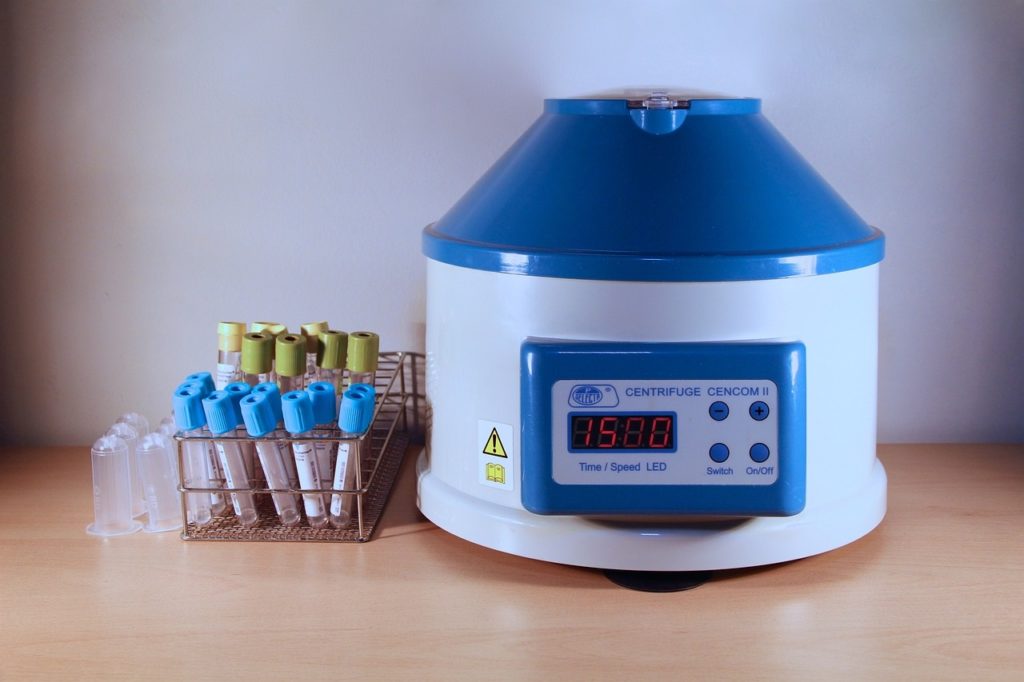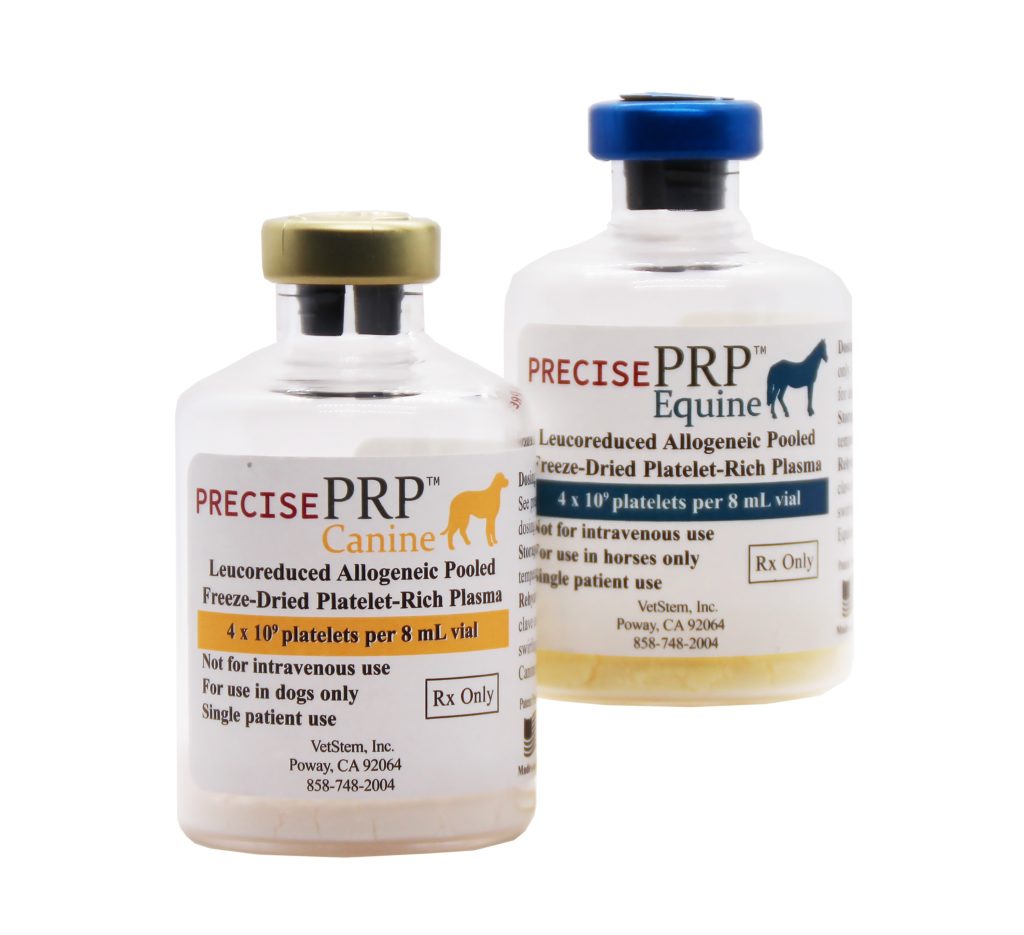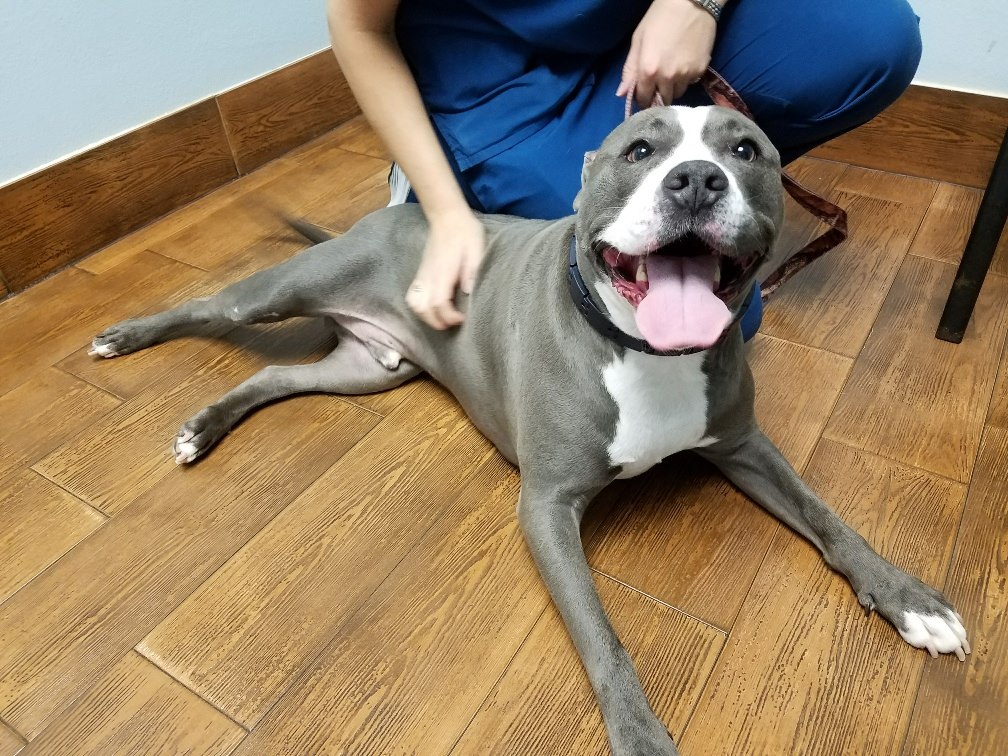Platelet-Rich Plasma: The Importance of Consistency
This week, we are debuting our latest product, PrecisePRP™, at the Fetch DVM360 veterinary conference in Kansas City, MO. This is our first conference since we launched the product, and we are very excited to get in front of veterinarians and technicians to explain what a game-changer PrecisePRP™ is for the industry!
Platelet-rich plasma (PRP) is defined as concentrated platelets in plasma. It is a therapeutic regenerative medicine modality that is commonly used to treat joint disease, such as osteoarthritis, as well as soft tissue injuries (tendon, ligament), and wounds. Unfortunately, there are several variables that can affect the concentration of platelets used for treatment, which can then affect the treatment outcome.

How is PRP Produced?
Platelet-rich plasma is most frequently produced in the veterinary clinic using a pet’s own blood. The blood is drawn from the patient then filtered or centrifuged using a mechanical PRP kit. There are several mechanical PRP kits on the market currently, each of which requires a unique processing method. Once the blood is run through the kit, the end result is PRP, which is then injected directly into the problem area (i.e., joint, tendon lesion, wound, etc.).
Disadvantages of Mechanical PRP Kits
There are several disadvantages that come with producing PRP using a mechanical kit. Perhaps the most significant of these is the variability of the final PRP used to treat the patient. Numerous factors can affect the final platelet concentration such as the current health of the patient, platelet count of the patient, operator handling of the sample, and the effectiveness of the kit used to produce the PRP. Ultimately, if the PRP doesn’t contain what is considered a therapeutic dose of concentrated platelets, the patient likely won’t experience much relief.
This variability was made apparent when, in researching PRP kits, we performed a comparison of four PRP kits for the production of equine PRP. Each kit demonstrated a lack of uniformity relating to the final platelet count and platelet concentration. Moreover, each kit failed to meet their respective platelet concentration claim.
Consistency with PrecisePRP™

We didn’t feel comfortable selling PRP kits that would potentially lead to poor treatment outcomes. So instead, we invented PrecisePRP™, a freeze-dried donor-derived platelet-rich plasma currently available in a dog and horse format. PrecisePRP™ Canine and PrecisePRP™ Equine do not require processing to produce PRP, instead your veterinarian will simply rehydrate and inject.
Each vial of PrecisePRP™ undergoes rigorous quality testing to meet precise product release specifications. This results in a uniform and consistent PRP product, eliminating the variability mentioned above so that veterinarians know exactly what they’re injecting every single time. PrecisePRP™ donors are screened according to FDA Center for Veterinary Medicine guidance and in controlled safety studies of dogs and horses, there were no notable adverse events related to treatment with PrecisePRP™.
Veterinarians interested in purchasing PrecisePRP™ should contact Customer Service.



